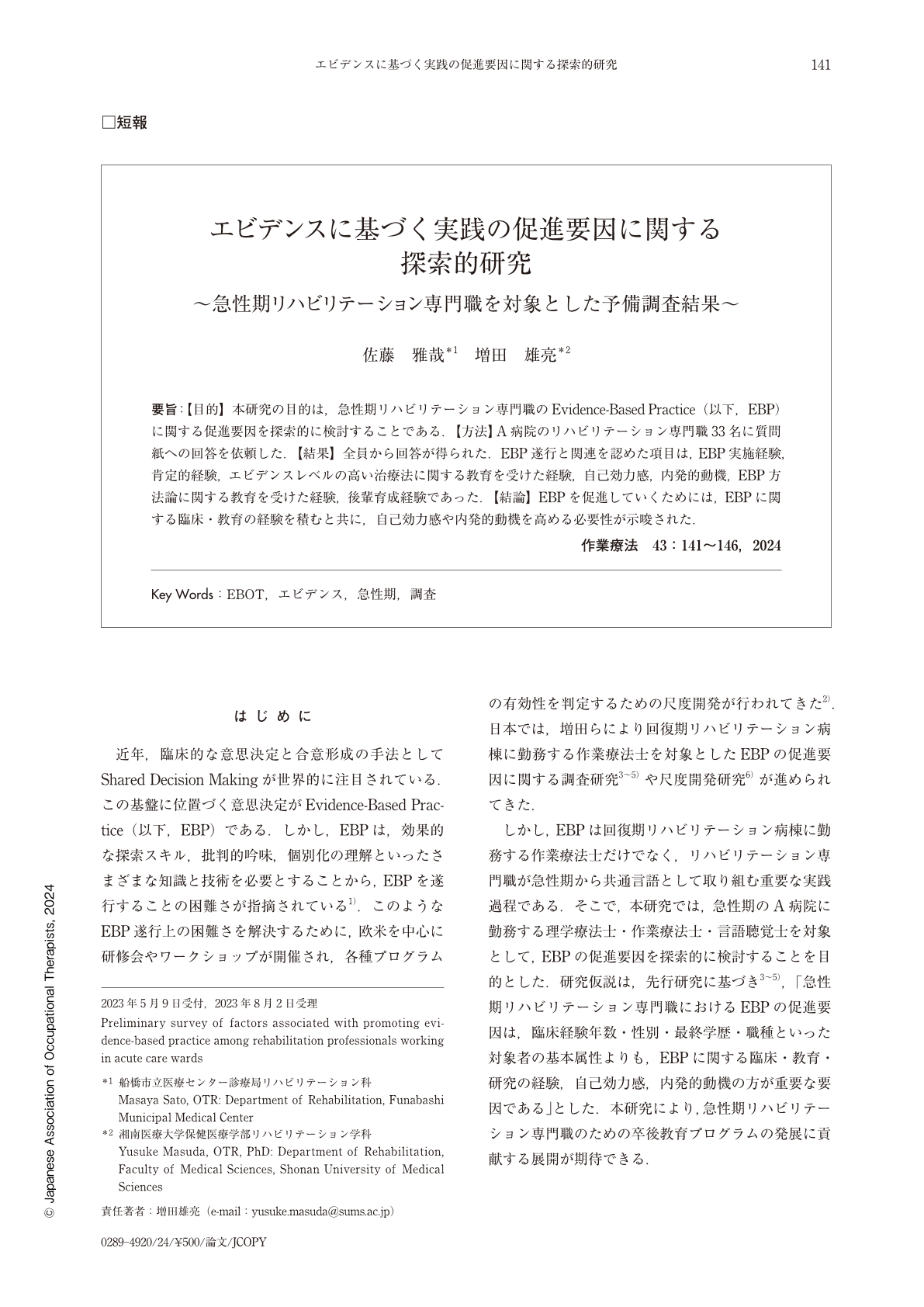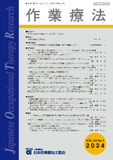Japanese
English
- 販売していません
- Abstract 文献概要
- 1ページ目 Look Inside
- 参考文献 Reference
要旨:【目的】本研究の目的は,急性期リハビリテーション専門職のEvidence-Based Practice(以下,EBP)に関する促進要因を探索的に検討することである.【方法】A病院のリハビリテーション専門職33名に質問紙への回答を依頼した.【結果】全員から回答が得られた.EBP遂行と関連を認めた項目は,EBP実施経験,肯定的経験,エビデンスレベルの高い治療法に関する教育を受けた経験,自己効力感,内発的動機,EBP方法論に関する教育を受けた経験,後輩育成経験であった.【結論】EBPを促進していくためには,EBPに関する臨床・教育の経験を積むと共に,自己効力感や内発的動機を高める必要性が示唆された.
Background: Evidence-Based Practice (EBP) is an important process that rehabilitation professionals working in acute care wards should work on as a common language. Purpose: This study explored the factors associated with promoting EBP among rehabilitation professionals working in acute care wards. Methods: Thirty-three rehabilitation professionals (21 Physical Therapists, 6 Occupational Therapists, and 6 Speech Therapists) working in the acute care ward of Hospital A were asked to respond to the questionnaire regarding EBP. Results: All 33 participants answered the questionnaire (100% response rate). The following were found to be associated with implementation of EBP: Experience in the implementation of EBP (r=.598, p<.001), Positive experiences resulting from implementation of EBP (r=.588, p<.001), Experience in education on high-level evidence-based intervention and assistance methods (r=.520, p=.002), Self-efficacy regarding EBP (r=.475, p=.005), Intrinsic motivation for EBP (r=.465, p=.006), Experience in education on EBP methodology (r=.358, p=.041), and Experience as preceptor in training of junior staff, e.g., educating new recruits (r=.345, p=.049). No significant correlation was found between implementation of EBP and years of clinical experience. Sex, job title, and final education had no significant effect on implementation of EBP. Conclusions: To promote the implementation of EBP among rehabilitation professionals working in acute care wards, the study suggests the need to gain clinical and educational experience in EBP, as well as to increase their self-efficacy and intrinsic motivation for EBP.

Copyright © 2024, Japanese Association of Occupational Therapists. All rights reserved.


